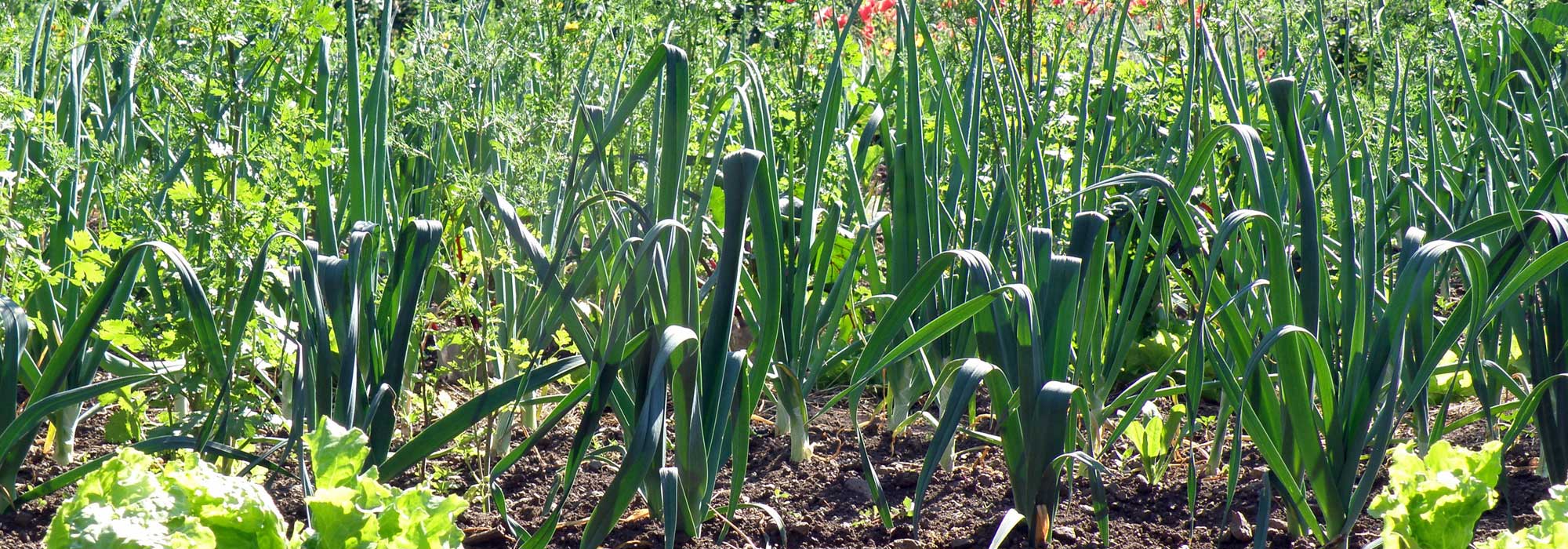
Leeks: sowing, planting, growing, harvesting
Contents
Leeks in a nutshell
- Leek is a leaf vegetable from the family of Liliaceae, it can be consumed entirely: the white part and the leaves.
- By choosing the right varieties, leek can be harvested almost all year round.
- It is sown in a nursery from mid-February to mid-May and is transplanted two to three months later in the garden.
- Leek is easy to grow but requires some pampering at planting; it needs to be dressed, praliné, and the furrows well prepared before planting.
- Onion fly and leek moth are the two main pests of leek, and it is simple to protect against them.
- 5 to 8 months is the time needed between sowing and the well-deserved harvest!
The word from our expert
Leek is a leaf vegetable from the Liliaceae family which includes many vegetable and aromatic plants such as garlic, shallots, onion, and chives. Leek is mainly cultivated for its bole, the white part of the leek, but it can be consumed in its entirety, from the green leaves to the roots!
Leek is mainly considered a winter vegetable, which is partly true due to the hardiness of certain varieties that can withstand temperatures as low as -15 to -20°C! However, there are a number of summer and autumn leeks. By wisely choosing the varieties it can be harvested during almost all seasons!
Among the fast-growing varieties, namely summer leeks, we have ‘Jaune gros du Poitou’ with light green foliage and good taste quality, ‘Electra’ leek, producing beautiful calibre boles with tender, bluish leaves for consumption. Among the autumn varieties that can also be harvested in winter in regions with mild winters, we have ‘Monstrueux de Carentan’ with a bulky bole that can measure up to 8 cm in diameter; and finally, among the winter leeks, with a more pronounced taste, ‘Bleu de Solaize’, an old, very hardy variety that takes on a purple hue in winter. It is worth noting an IGP (Protected Geographical Indication) with the Créances leek in Normandy: it grows in sandy soil enriched with coastal seaweed and receives moisture from sea spray, giving it tenderness and a slightly sweet taste, which is worth discovering!
Growing leeks requires a sunny position and light, well-worked, draining soil, rich but without fresh manure, ideally composed of compost spread a few months in advance. Maintenance during cultivation consists of regular weeding and hoeing, and monitoring for the absence of two common pests, the leek moth and the leek miner.
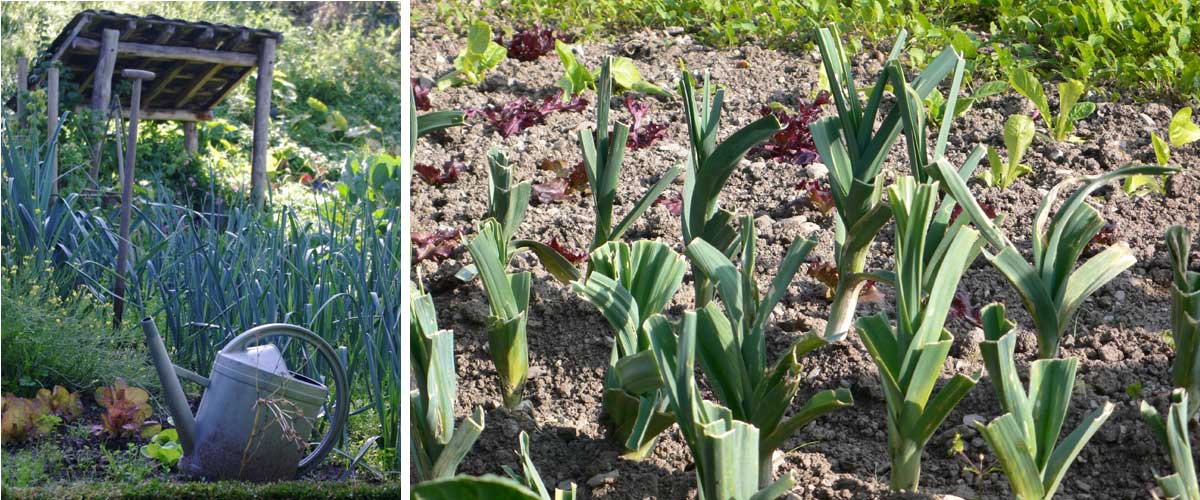
Description and botany
Botanical data
- Latin name Allium porrum
- Family Amaryllidaceae or Liliaceae
- Common name Leek
- Flowering Biennial
- Height 2 years
- Exposure Sun
- Soil type Loamy, light, draining quickly
- Hardiness Hardy to very hardy
Leek, or to be precise, leeks, descend from various wild bulbous plants whose geographical range extends over a large Mediterranean area, from Iran to Portugal. Today, we identify three forms of cultivated leek: Taree Irani from Iran, Kurrat from Egypt, and the European leek from southern Europe. Botanists still wonder today if there is a common ancestor among these three cultigroups. In any case, domestication dates back to 2000 BC in Egypt with the “Kurrat” leek, its foliage was then long and very fine. It was highly consumed by the Romans. We also know that during the Middle Ages, leek was domesticated throughout Europe. From the XVI, in France, long-bole leeks were selected for more productive and summer harvests, while short-bole leeks were resistant to winter.
Etymologically, the name “leek” comes from the Latin porrum, it was formerly called “porreau” and even earlier “por”. The genus name “Allium” comes from the Latin “olere” meaning to smell.
Leek or Allium porrum is a biennial herbaceous plant belonging to the family of Liliaceae according to Cronquist classification or Amaryllidaceae according to APG III classification. The leek has long leaves that vary in colour from light to dark green, even blue or purple depending on the variety and the action of cold, which tends to accentuate the purple colour. These leaves, more or less wide, are sheathing and together form what is called a pseudo-stem known as the bole. This bole is white and corresponds to the most prized part of the leek, its taste is fine and corresponds to the buried part that has not benefited from light. The “green” part of the leek is tougher and is generally discarded. In the second year of cultivation, the leek produces a flower stalk topped with a spherical purple umbel that bears numerous hermaphrodite and protandrous flowers, which cannot self-fertilise individually. However, the flowers can fertilise each other at the level of the umbel. Each flower can produce up to six seeds. It is common for the leek to produce two small bulbils at the base of the flower stalk, a sort of “reminder” of before their domestication, which can be replanted.
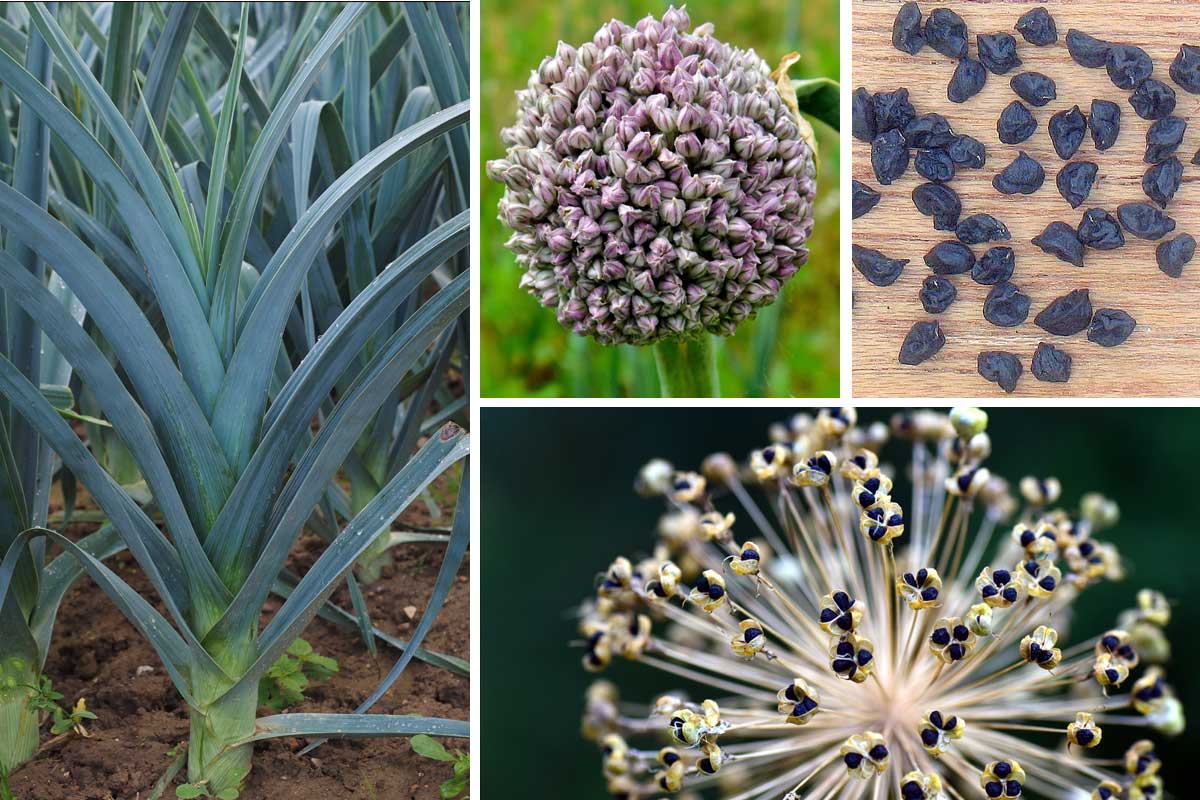 The leek as a whole – Leek flowers – Leek seeds[/caption>
The leek as a whole – Leek flowers – Leek seeds[/caption>
Leek varieties
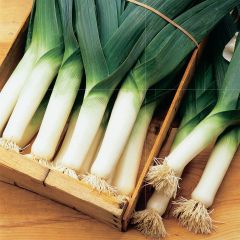
Electra Bio Leek - Ferme de Sainte Marthe seeds
- Height at maturity 40 cm
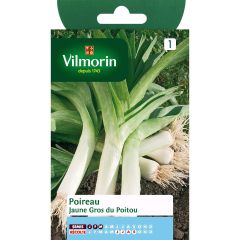
Yellow large from Poitou Leek - Vilmorin seeds - Allium porrum
- Height at maturity 65 cm
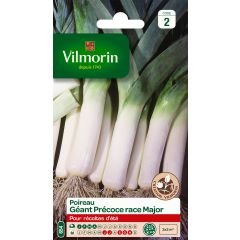
Leek Early Giant Major - Vilmorin Seeds
- Height at maturity 70 cm
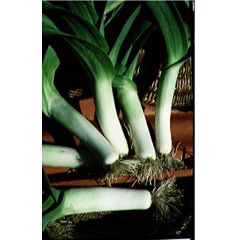
Malabar Leek - Allium porrum
- Height at maturity 40 cm
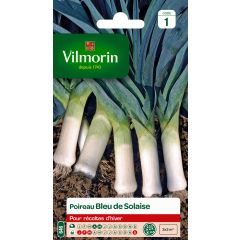
Leek Blue Solaise - Vilmorin Seeds
- Height at maturity 75 cm
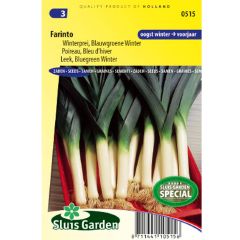
Leek Farinto
- Height at maturity 75 cm
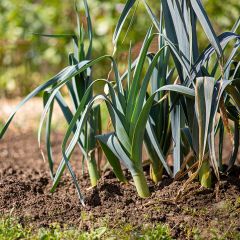
Leek De Saint Victor - Ferme de Sainte Marthe Seeds
- Height at maturity 45 cm
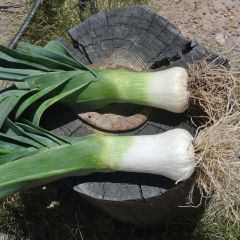
Monstrous Leek of Carentan Organic - Allium porrum
- Height at maturity 1 m
Discover other Leek seeds
View all →Available in 0 sizes
Available in 1 sizes
Available in 1 sizes
Available in 1 sizes
Available in 1 sizes
Available in 1 sizes
Available in 1 sizes
Available in 1 sizes
Available in 1 sizes
Sow leeks
Where and when to sow leeks?
Leeks can be sown throughout mainland France, even in mountainous climates as they tolerate cold well.
Each variety of leek corresponds to an ideal sowing period, which can vary in length: this information is indicated on the seed packet, and it is important to refer to it.
Generally, for a harvest:
- in summer, sow from mid-February to mid-May,
e.g. ‘Gros long d’été’, ‘Jaune gros du Poitou’, ‘Géant précoce’ - in autumn, sow from mid-March to the end of April,
e.g. ‘Monstrueux d’Elbeuf’, ‘Electra’, ‘de Carentan’ - in winter, sow from April to mid-May,
e.g. Bleu de Solaise, ‘Vernor’, ‘de Saint-Victor’
How to sow leeks?
Leeks are ideally sown in open ground nurseries but can also be sown in fairly deep trays, such as fish boxes, at a minimum temperature of 13 °C.
To sow, in practice:
- Dig a furrow 2 cm deep.
- Sow lightly, about one to two seeds every cm.
- Close the furrow with garden soil or a special sowing compost if your soil is heavy.
- Lightly compact the furrow with the back of the rake.
- Water gently with the spout of the watering can.
Germination will take between fifteen days and three weeks, be sure to monitor moisture and water if necessary. You should then wait for the young plants to reach about fifteen centimetres in height and the thickness of a pencil, which will take 2 to 3 months after sowing. You can then proceed to transplanting.
Planting, transplanting leeks
When leeks sown in the nursery reach the right stage, that is to say, at least 15 cm tall and the thickness of a pencil, it is possible to proceed to planting.
To do this, it is advisable to gently uproot the young plants and let them dry or “rest” on the ground and in the shade for two days.
Be careful, it is extremely important to keep them in the shade, full sun could dry them out and kill them. This operation aims to remove the smell of the leek and thus limit attacks from the leek moth.
Dressing and pralinage of leeks
Once the plants have reached the diameter of a pencil, we proceed to dressing. For this operation, it is necessary to cut the roots to 2 to 3 cm below the bulb and at the same time cut the young leaves a few cm above the bole. Removing the roots allows for better rooting by stimulating the growth of new roots, and cutting the leaves prevents too rapid evaporation.
After dressing, I recommend pralinage, but this is an optional operation. Pralinage consists of coating the bare roots of the leek with a mud made from garden soil and well-rotted compost in equal parts, then adding water. The roots of the leeks are coated with this mud. The roots must be straight, heavy, and not bend during planting.
How to properly transplant leeks to obtain beautiful whites
Leeks prefer a sunny location and rich, deep soil, well enriched with organic matter but without too recent amendments. Loosen the flowerbed and plan for rows spaced 30 cm apart.
- On prepared soil, draw deep furrows of at least 10 cm. To assist you, there is a specific tool, the ridger, but if you do not have one, you can use a wide hoe, a spade, or even a hand trowel.
- Using a dibber (first photo below), make deep holes of 10 cm, spaced 15 cm apart in the row.
- Plant your pralinaged young plants, ensuring the white part is completely buried.
- Water generously at the spout of the watering can, which will close the holes around the bole of the leeks.
Following this watering, the leeks may appear to be lying down, but this is not a concern; they will straighten up within 15 days. Note that the furrow is not yet closed; it will be as the ridging progresses.
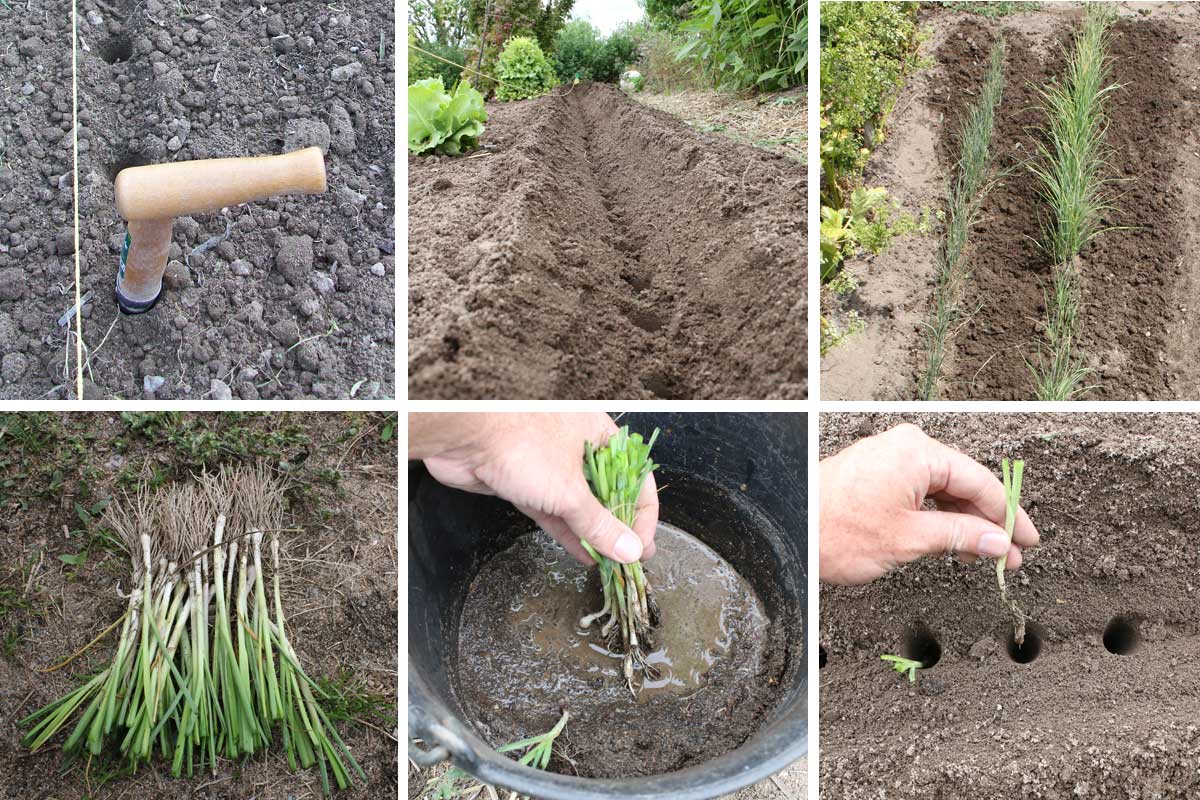
Planting leeks, step by step – Photographs: A. Gourmelen
Growing, care and associations
To successfully grow leeks, it is essential to choose a good location and properly prepare the soil: Leeks thrive in sunny spots with deep, rich soil. A supply of compost or manure is necessary, ideally at a rate of 3 to 4 kg per m2, to be spread a few months before planting, as leeks are sensitive to fresh and recent amendments.
About a month after planting, leeks should be earthed up to keep the bole as much as possible away from light, ensuring it remains white and tender. Earthing up also helps to increase the length of the white part. Soil from the sides of the furrow will be brought to the centre to create the earthing up. Additional earthing up can be done gradually to increase the length of the white part of the leeks.
Regular maintenance involves performing regular hoeing and weeding, and watering should be consistent throughout the summer, which can be stopped with the autumn moisture.
In terms of companion planting, leeks pair very well with carrots. This is a beneficial companionship for both vegetables: the carrot fly dislikes the smell of leeks, and leeks are not fond of carrots! Tomatoes, lettuces, and strawberries are also good companion plants for leeks, but they dislike the presence of their cousin, the onion, and other Alliums (shallots, garlic), as well as beets and beans.
Regarding the association with strawberries, it is rather the latter that appreciates the presence of leeks, protecting them from certain fungal diseases; you can plant a few among your rows of strawberries. However, it must be admitted that establishing a crop of leeks among strawberries is quite impractical!
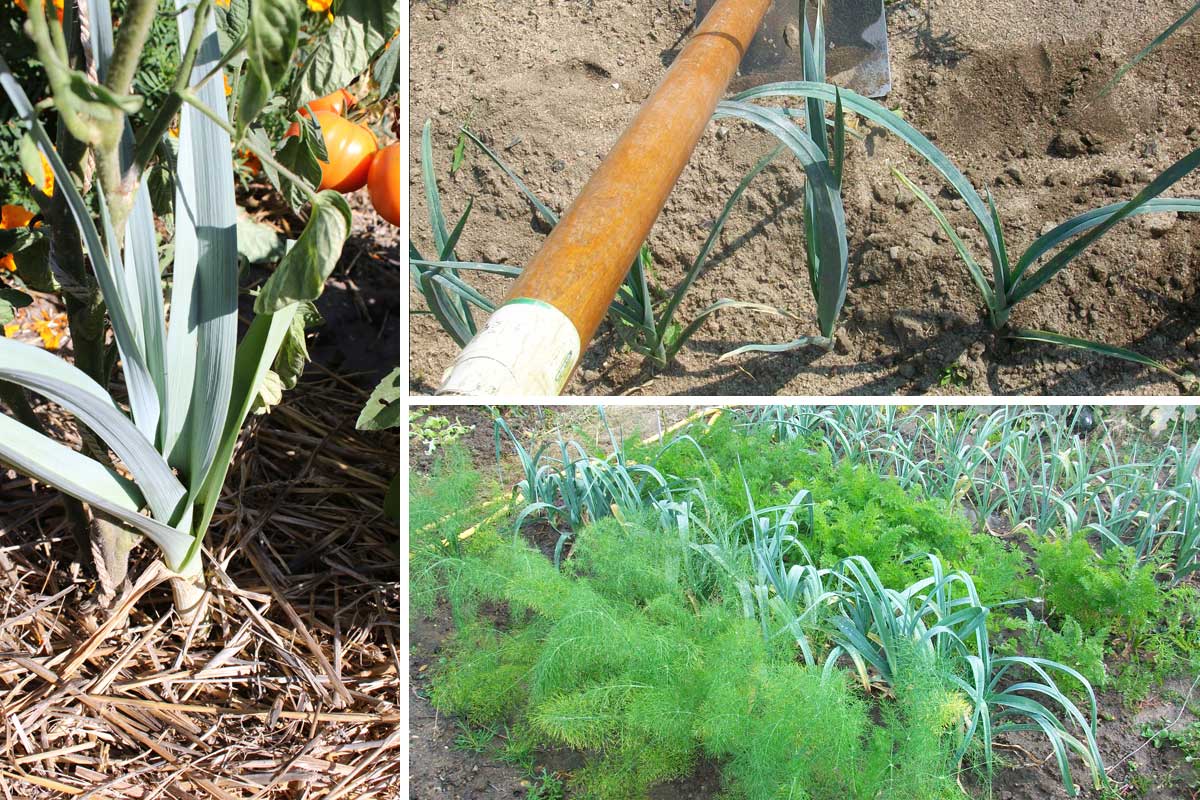
Leek associated with tomato – Earthing up leeks, bringing soil to promote the white part – Association of fennels, leeks, and carrots (fennel grows very well next to leeks!)
Pests and diseases of leeks
Leek Moth and Leek Leaf Miner
The leek moth (Acrolepiopsis assectella), a butterfly, and the leaf miner (Phytomyza gymnostoma) are the two main pests of leeks. The caterpillars or larvae burrow into the leaves and then settle in the bole, which significantly depreciates the leeks. The leaf miner causes damage in spring and autumn, while the leek moth does so from summer onwards.
Among all preventive measures, the installation of an insect net is the most effective. However, it can be accompanied or replaced, if you believe you are not in a high-risk area, by:
- Companion planting with carrots, alternating ranks of carrots and ranks of leeks.
- Implementing a mulch made from repellent plant waste (lavender, tansy).
- Additionally, discover Ingrid’s article on this topic: Leek Miner: Protect Your Crops
Leek Rust
The most common disease affecting leeks is rust caused by a fungus (Pucccinia porri), which appears in late summer as small orange spots on the foliage. This disease can be prevented by spraying with horsetail decoction or Bordeaux mixture. Some varieties, such as ‘Below Zero F1’ or ‘Oarsman F1’, are less susceptible to it.
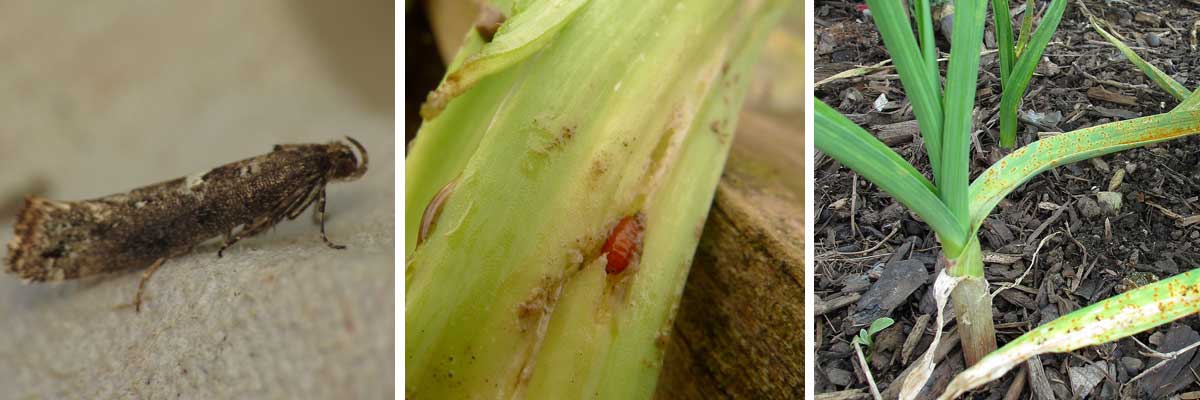
Adult leek moth – Leek miner at pupal stage – Leek rust
→ More information on leek diseases and pests in our advice sheet.
Harvest and preserve
The harvest usually takes place between 5 and 8 months after sowing and is carried out as needed.
To harvest, gently pull on the leek to avoid damaging or cutting into the bole. If you encounter difficulties during this process, use a garden fork a few cm away from the leek and lever it out more easily.
Winter leeks can be left in the ground and harvested as needed. Autumn leeks, which are less frost-resistant, should be removed before the winter period.
At home, you can keep leeks for two weeks in the vegetable drawer of your refrigerator. They can be stored for 3 months in the freezer. You should bag them after blanching for a few minutes, rinsing them under cold water, and then drying them thoroughly.
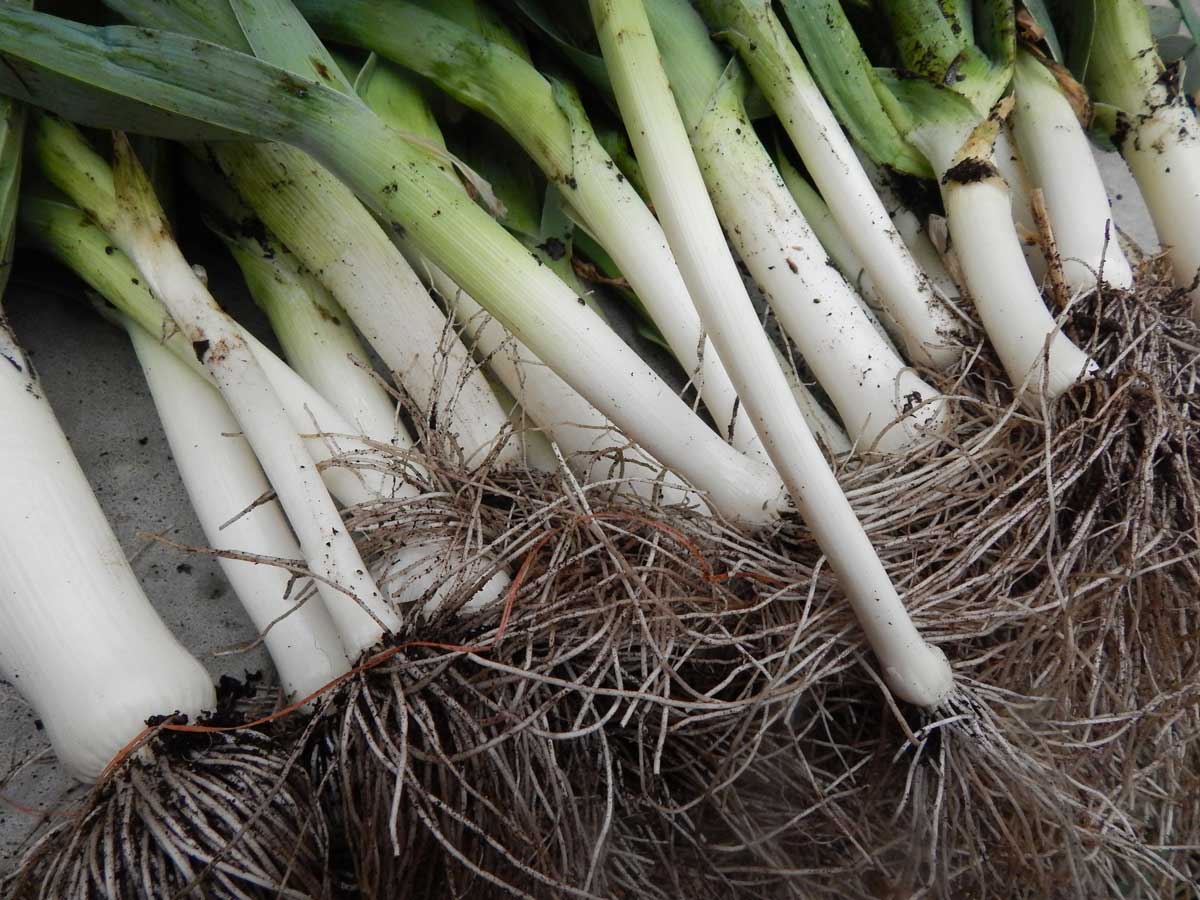
Uses and nutritional benefits
Leek is rich in dietary fibre facilitating transit, as well as in fructosaccharides with diuretic properties. It is also rich in vitamins C and B and in sulphur compounds with antioxidant virtues. It is reputed, like onion, to lower cholesterol levels in the blood among other benefits. The green part of the leek contains carotin and other antioxidant substances, which are even more concentrated with the winter cold.
Everything is consumable in the leek, the green, the white, and the roots. It is used in the preparation of many local dishes around the world. It is a key ingredient in the traditional pot-au-feu, but it is also consumed in soups, quiches, cold in dressings, or even raw, finely chopped in salads, etc. The Japanese particularly enjoy it: it can be found in many recipes such as sushi and sashimi, delicious leeks with sesame, or miso soup.
It is very common for the green leaves and rootlets to be discarded. Rather than throwing away the leaves, they can be blended to make soups, or simply blanched and then dipped in a tempura batter to make fritters. The rootlets, after being well cleaned, are highlighted by frying them in a little oil.
Useful resources
- Find our wide range of leek seeds in our online shop.
- Advice sheet: growing summer leeks
- Discover perpetual leeks: their planting and cultivation.
- Leek moth in the vegetable garden: prevention and treatment, all our tips!
Frequently asked questions
-
Why aren't my leeks growing?
Several possibilities regarding thin leeks: they may have been sown too closely, in which case the young leeks tend to bolt rather than reach the proper transplanting stage, making it difficult to catch up on their growth after transplanting. They may also lack fertiliser at planting, or water, or have been transplanted too late in the year.
-
What to do with leek greens?
The green part of the leek, which is the richest in antioxidants, can be cooked in soups or simply blanched and dipped in a tempura batter to make fritters, for example.
-
Why do my leeks have worms?
If the caterpillar-like larva is present, it is the leek moth. Otherwise, if it has the appearance of a pale yellow, almost translucent worm or is immobile and brown (in the pupal stage), it is the leek miner. See our tips above in the section "Pests and diseases of leeks.
- Subscribe!
- Contents
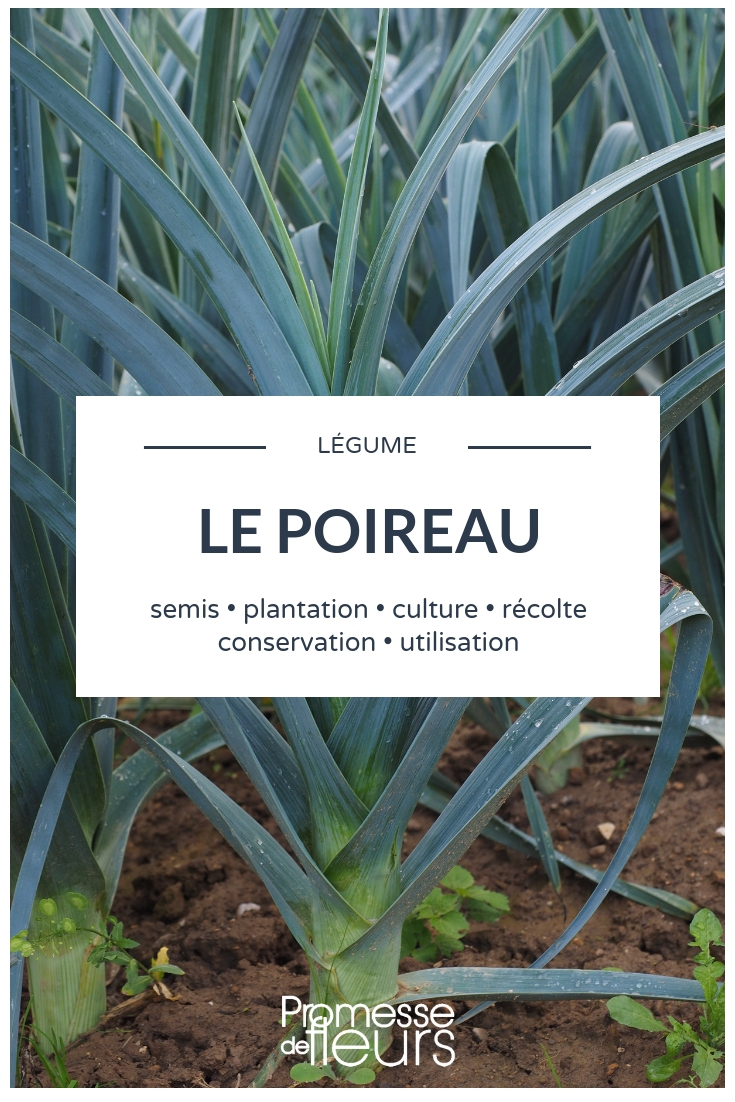
































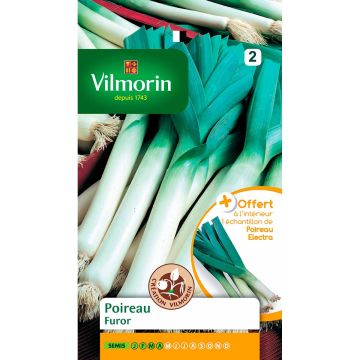

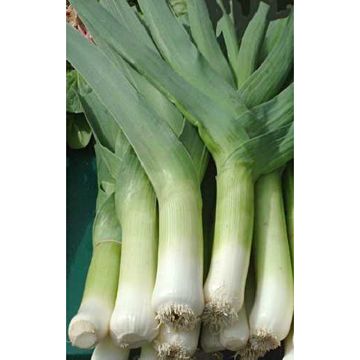

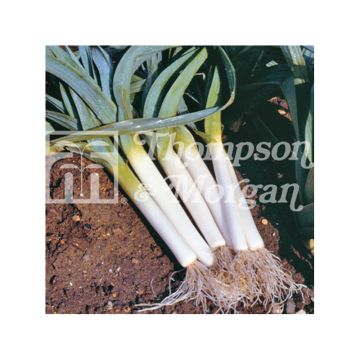
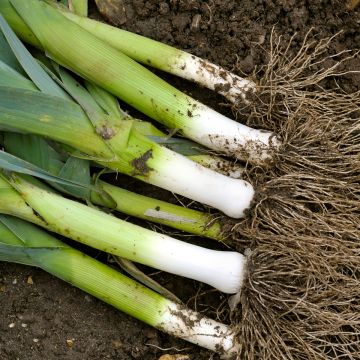
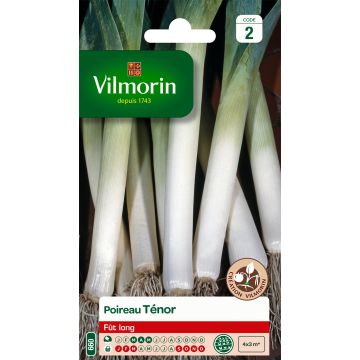
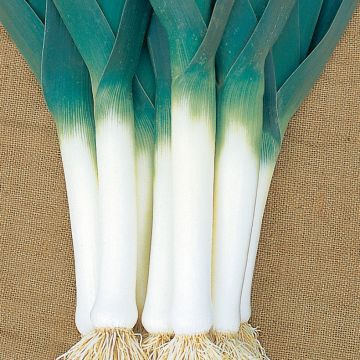
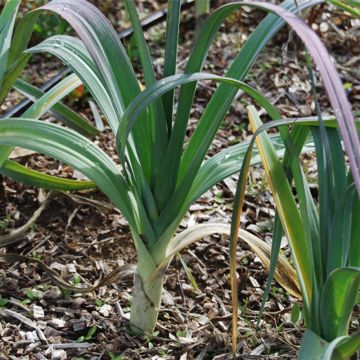
Comments